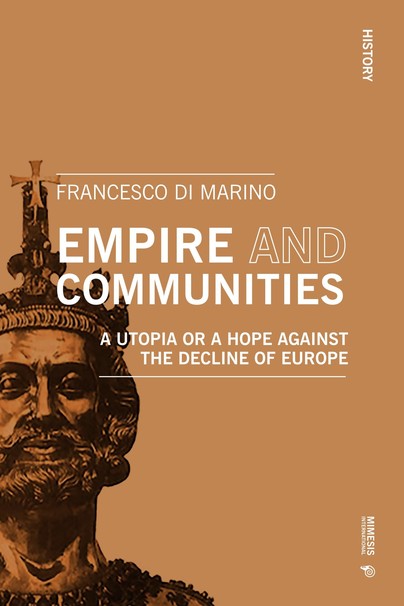
Format: Paperback
Pages: 120
ISBN: 9788869772825
Pub Date: 28 Oct 2020
Description:
The reduction of the shares of internal sovereignty, the emergence of transnational or international authorities, the overcoming financial systems’ power, underline the inadequacy of governments based on the obsolete dimension of “nation”. Hence the lack of power to determine the future of all people, in particular the Communities forgotten or disregarded because considered minorities for the nation. The imperial rule might guarantee in the future the equal people’s dignity, providing that it represents the fusion of earthly and sacred characters with which it was endowed during its splendour in the Middle Age.
Even if this design could appear as a utopia, or just thence, Men must pursue it, neither with hope of immediate success, nor fear of failure, sine spe ac metu.
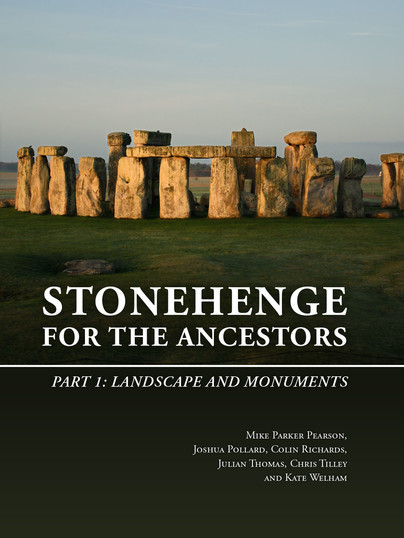
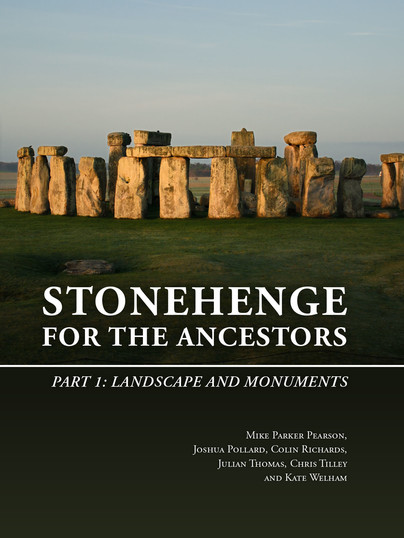
Pages: 520
ISBN: 9789088907036
Pub Date: 28 Oct 2020
Series: The Stonehenge Riverside Project
Illustrations: 190fc/202bw
Pages: 520
ISBN: 9789088907029
Pub Date: 28 Oct 2020
Series: The Stonehenge Riverside Project
Illustrations: 190fc/202bw
Description:
For many centuries, scholars and enthusiasts have been fascinated by Stonehenge, the world’s most famous stone circle. In 2003 a team of archaeologists commenced a long-term fieldwork project for the first time in decades. The Stonehenge Riverside Project (2003-2009) aimed to investigate the purpose of this unique prehistoric monument by considering it within its wider archaeological context.
This is the first of four volumes which present the results of that campaign. It includes investigations of the monuments and landscape that pre-dated Stonehenge on Salisbury Plain as well as of excavation at Stonehenge itself. The main discovery at Stonehenge was of cremated human remains from many individuals, allowing their demography, health and dating to be established. With a revised radiocarbon-dated chronology for Stonehenge’s five stages of construction, these burials can now be considered within the context of the monument’s development. The different types of stone from which Stonehenge is formed – bluestones from Wales and sarsen silcretes from more local sources – are investigated both at Stonehenge and in its surroundings. These surrounding monuments include single standing stones, the Cuckoo Stone and the Tor Stone, as well as the newly discovered circle of Bluestonehenge at West Amesbury beside the River Avon. The ceremonial Stonehenge Avenue, linking Stonehenge to Bluestonehenge, is also included, based on a series of excavations along its length.The working hypothesis behind the Stonehenge Riverside Project links Stonehenge with a complex of timber monuments upstream at the great henge of Durrington Walls and neighbouring Woodhenge. Whilst these other sites are covered in a later volume (Volume 3), this volume explores the role of the River Avon and its topographic and environmental evidence.With contributions by:Umberto Albarella, Michael Allen, Olaf Bayer, Wayne Bennett, Richard Bevins, Christopher Bronk Ramsey, Chris Casswell, Andrew Chamberlain, Benjamin Chan, Rosamund Cleal, Gordon Cook, Glyn Davies, David Field, Charles French, Robert Ixer, Neil Linford, Peter Marshall, Louise Martin, Claudia Minniti, Doug Mitcham, Bob Nunn, Andy Payne, Mike Pitts, Rebecca Pullen, Julian Richards, David Robinson, Clive Ruggles, Jim Rylatt, Rob Scaife, Ellen Simmons, Charlene Steele, James Sugrue, Anne Teather, Sarah Viner, Tony Waldron, Katy Whitaker and Christie Willis
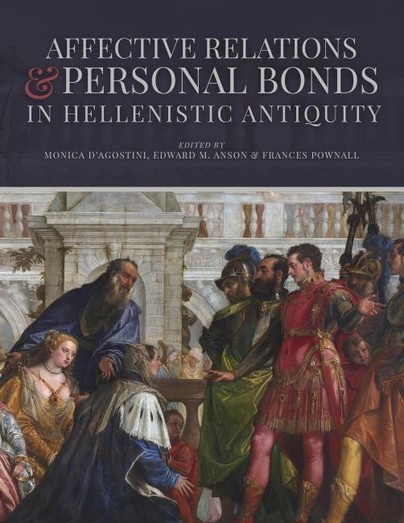
Format: Hardback
Pages: 296
ISBN: 9781789254983
Pub Date: 15 Oct 2020
Illustrations: b/w
Description:
The intense bonds among the king and his family, friends, lovers, and entourage are the most enticing and intriguing aspects of Alexander the Great’s life. The affective ties of the protagonists of Alexander’s Empire nurtured the interest of the ancient authors, as well as the audience, in the personal life of the most famous men and women of the time. These relations echoed through time in art and literature, to become paradigm of positive or negative, human behavior.
By rejecting the perception of the Macedonian monarchy as a positivist king-army based system, and by looking for other political and social structures Elizabeth Carney has played a crucial role in prompting the current re-appraisal of the Macedonian monarchy. Her volumes on Women and Monarchy in Ancient Macedonia (University of Oklahoma Press, 2000), Olympias: Mother of Alexander the Great (Routledge, 2006), Arsinoë of Egypt and Macedon: A Royal Life. (Oxford University Press, 2013) have been game-changers in the field and has offered the academic world a completely new perspective on the network of relationships surrounding the exercise of power. By examining Macedonian and Hellenistic dynastic behavior and relations, she has shown the political yet tragic, heroic thus human side, thus connecting Hellenistic political and social history. Building on the methodological approach and theoretical framework engendered by Elizabeth Carney’s research, this book explores the complex web of personal relations, inside and outside the oikos (family), governing Alexander’s world, which sits at the core of the inquiry into the human side of the events shedding light light on the personal dimension of history. Inspired by Carney’s seminal work on Ancient Macedonia, the volume moves beyond the traditionally rationalist and positivist approaches towards Hellenistic antiquity, into a new area of humanistic scholarship, by considering the dynastic bloodlines as well as the affective relations. The volume offers a discussion of the intra and extra familial network ruling the Mediterranean world at the time of Philip and Alexander. Building on present scholarship on relations and values in Hellenistic Monarchies, the book contributes to a deeper historical understanding of the mutual dialogue between the socio-cultural and political approaches to Hellenistic history.

Format: Hardback
Pages: 304
ISBN: 9781612008851
Pub Date: 15 Oct 2020
Illustrations: Over 250 color and black-and-white photographs and illustrations
Description:
In Romans at War ground-breaking research is presented in an accessible, entertaining, and sumptuously illustrated format, including: • A new consideration of the nature of late Roman military leaders; the author argues they were effectively independent warlords.• Cutting edge research regarding the Severan campaigns to conquer Scotland in the early 3rd century AD.• A new analysis of the nature of late Roman troops, both mounted and foot.
The Roman military machine was the pre-eminent in the ancient world, projecting power across the known world over a vast chronology, and an increasing huge and diverse geography. One of the most powerful instruments of war in the history of conflict, it proved uniquely adept at learning from setbacks, always coming back the stronger for it. In so doing it displayed two of the most important traits associated with the world of Rome. Firstly grit, that key ability to remain steadfast and to overcome adversity, even in the most challenging of circumstances, as faced for example by the Republic in the Second Punic War against Hannibal. Secondly, the ability to copy the successful technical and tactical innovations of their enemies, enabling the Roman military to always stay one step ahead of its opponents on campaign and in battle. In this grand tour covering every aspect of the Roman military, leading expert Dr Simon Elliott first provides a detailed background to the Roman Republic and Empire to provide context for all that follows. He then looks specifically at the Roman military in its three key chronological phases: the Republic, the Principate Empire and the Dominate Empire. Next he forensically examines specific examples of the Roman military on campaign and in battle, and of its engineering prowess. Finally, he examines the many enemies faced by the Roman Republic and Empire. This all provides a firm structure to enable the reader to come to grips with this incredible military machine, one whose exploits still resonate in the world to this very day.
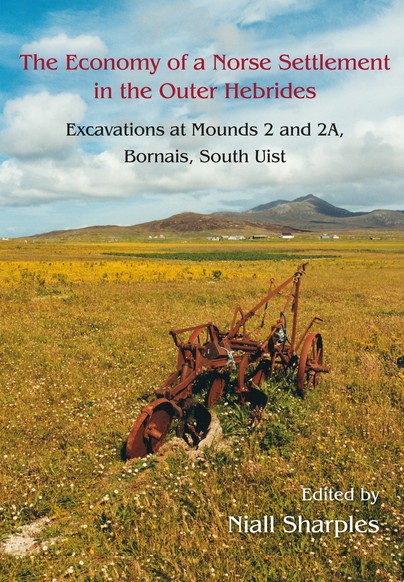
Format: Hardback
Pages: 608
ISBN: 9781789255386
Pub Date: 15 Oct 2020
Series: Bornais
Illustrations: colour and b/w
Description:
This book explores the economic evidence for the settlement at Bornais on South Uist. It reports in detail on the large assemblages of material found during the excavations at mounds 2 and 2A. There is important evidence for craft activity, such as bone and antler working and this includes the only comb making workshop from a rural settlement in Britain.
A large proportion of the copper alloy, bone and antler assemblages comprise pieces of personal adornment and provide important information on the dress and thereby social relations within the settlement occupation. There is a large assemblage of iron tools and fittings, which provides important information on the activities taking place at the settlement. The information derived from the artefact assemblages is complemented by that provided by the ecofactual material. Large amounts of animal, fish and bird bones plus carbonised plant remains provide detailed information on agricultural practices, and the processing, preparation and consumption of foodstuffs. It is clear that the Norse inhabitants of the settlement had access to a much richer variety of resources than had been exploited before the Viking colonisation of the region. The settlement also had a significantly wider range of connections; material culture indicates contacts to the south with the Irish Sea ports and Bristol, and to the north with Shetland and the Viking homelands of Norway. The evidence produced by these excavations is exceptional and provides an unparalleled opportunity to explore medieval life in the Scandinavian kingdoms of Western Britain.
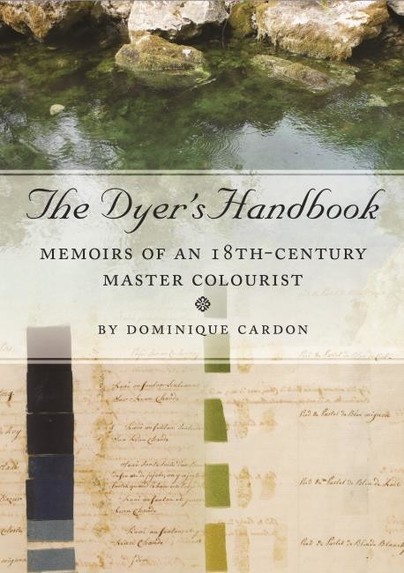
Format: Paperback
Pages: 160
ISBN: 9781789255492
Pub Date: 01 Oct 2020
Description:
Persian blue, pomegranate flower, spiny lobster, wine soup, pale flesh, dove breast, golden wax, grass green, green sand, rotten olive, modest plum, agate, rich French gray, gunpowder of the English..
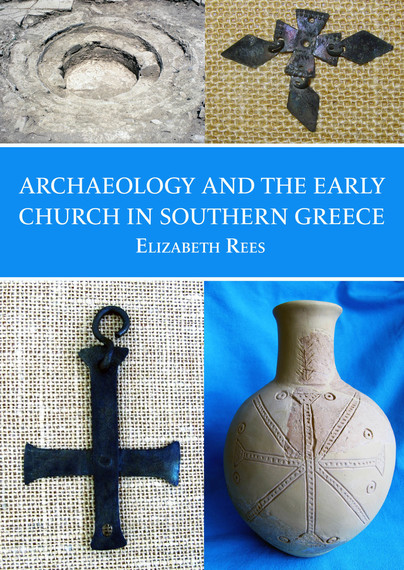
Format: Paperback
Pages: 216
ISBN: 9781789255751
Pub Date: 30 Sep 2020
Illustrations: B/w and colour
Description:
A study of archaeology and the early Church in Greece is long overdue. So far, no book has been published in English that examines the growth of Christianity in southern Greece from New Testament times until the medieval period, taking into account both contemporary theological expertise and a detailed knowledge of the numerous and exciting current archaeological excavations. Situated between Israel and Italy, Greece is now yielding vital evidence of the development of early Christianity.
Mainland Greece and its surrounding islands is a vast region, and I have chosen to focus on an area rich in early Christian remains, namely the region stretching from Athens southwards.The book examines evidence relating to Christianity in New Testament times, particularly through the writings of St Paul and early theologians, and juxtaposes these texts with recent and current excavations at Corinth, with its twin ports of Kenchreai and Lechaion, and its chief sanctuary beyond the city at Isthmia, where St Paul worked during the celebration of the pan-Hellenic Games. Much of the excavation at Lechaion has been carried out underwater by divers pioneering new methods of preserving submerged material, since most of the harbour is entirely submerged.Later, particularly from the sixth century onwards, Christian basilicas were built throughout Greece. A number of these are examined, including those at Nemea and Epidaurus. Nemea provides unique evidence of an agricultural community guided by a bishop; numerous Christian artefacts have been excavated at the site. Epidaurus was honoured as the birthplace of the healing god Asclepius, and early Christians inherited and developed these healing skills in unexpected ways. At other locations, monks developed a wide variety of lifestyles that were little known in the Western Church. The archaeology of Christian sites in Greece is a new and unfolding discipline; this book will hopefully encourage scholars and students to take these studies further.
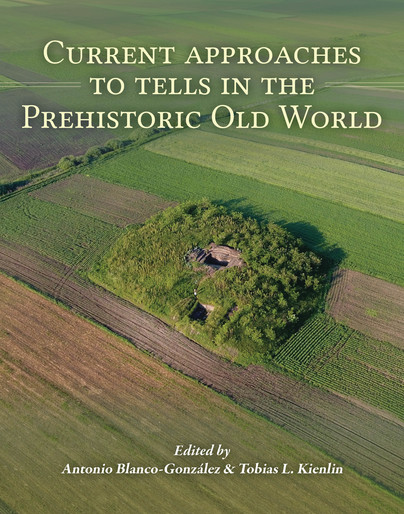
Format: Paperback
Pages: 224
ISBN: 9781789254860
Pub Date: 15 Sep 2020
Description:
Deeply stratified settlements are a distinctive site type featuring prominently in diverse later prehistoric landscapes of the Old World. Their massive materiality has attracted the curiosity of lay people and archaeologists alike. Nowadays a wide variety of archaeological projects are tracking the lifestyles and social practices that led to the building-up of such superimposed artificial hills.
However, prehistoric tell-dwelling communities are too often approached from narrow local perspectives or discussed within strict time- and culture-specific debates. There is a great potential to learn from such ubiquitous archaeological manifestations as the physical outcome of cross-cutting dynamics and comparable underlying forces irrespective of time and space. This volume tackles tells and tell-like sites as a transversal phenomenon whose commonalities and divergences are poorly understood yet may benefit from cross-cultural comparison. Thus, the book intends to assemble a representative range of ongoing theory – and science –based fieldwork projects targeting this kind of sites. With the aim of encompassing a variety of social and material dynamics, the volume’s scope is diachronic – from the Earliest Neolithic up to the Iron Age–, and covers a very large region, from Iberia in Western Europe to Syria in the Middle East. The core of the volume comprises a selection of the most remarkable contributions to the session with a similar title celebrated in the European Association of Archaeologists Annual Meeting held at Barcelona in 2018. In addition, the book includes invited chapters to round out underrepresented areas and periods in the EAA session with relevant research programmes in the Old World. To accomplish such a cross-cultural course, the book takes a case-based approach, with contributions disparate both in their theoretical foundations – from household archaeology, social agency and formation theory – and their research strategies – including geophysical survey, microarchaeology and high-resolution excavation and dating.
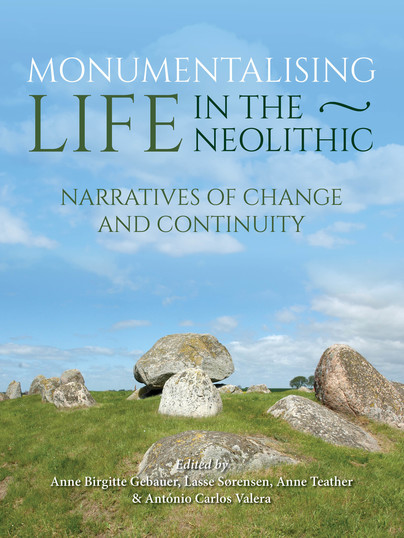
Format: Hardback
Pages: 320
ISBN: 9781789254945
Pub Date: 15 Sep 2020
Illustrations: colour and b/w
Description:
One of the principal characteristics of the European Neolithic is the development of monumentality in association with innovations in material culture and changes in subsistence from hunting and gathering to farming and pastoralism. The papers in this volume discuss the latest insights into why monumental architecture became an integral part of early farming societies in Europe and beyond. One of the topics is how we define monuments and how our arguments and recent research on temporality impacts on our interpretation of the Neolithic period.
Different interpretations of Göbekli Tepe are examples of this discussion as well as our understanding of special landmarks such as flint mines. The latest evidence on the economic and paleoenvironmental context, carbon 14 dates as well as analytical methods are employed in illuminating the emergence of monumentalism in Neolithic Europe. Studies are taking place on a macro and micro scale in areas as diverse as Great Britain, Denmark, Sweden, Poland, Germany, the Dutch wetlands, Portugal and Malta involving a range of monuments from long barrows and megalithic tombs to roundels and enclosures. Transformation from a natural to a built environment by monumentalizing part of the landscape is discussed as well as changes in megalithic architecture in relation to shifts in the social structure. An ethnographic study of megaliths in Nagaland discuss monument building as an act of social construction. Other studies look into the role of monuments as expressions of cosmology and active loci of ceremonial performances. Also, a couple of papers analyse the social processes in the transformation of society in the aftermath of the initial boom in monument construction and the related changes in subsistence and social structure in northern Europe. The aim of the publication is to explore different theories about the relationship between monumentality and the Neolithic way of life through these studies encompassing a wide range of types of monuments over vast areas of Europe and beyond.
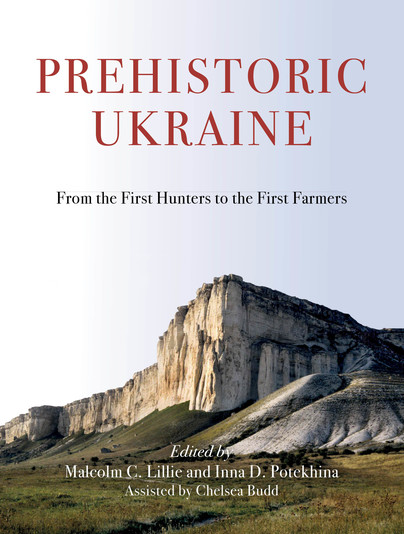
Format: Hardback
Pages: 352
ISBN: 9781789254587
Pub Date: 15 Sep 2020
Illustrations: b/w
Description:
This volume covers the Prehistory of Ukraine from the Lower Palaeolithic through to the end of the Neolithic periods. This is the first comprehensive synthesis of Ukrainian Prehistory from earliest times through until the Neolithic Period undertaken by researchers who are currently investigating the Prehistory of Ukraine. At present there are no other English language books on this subject that provide a current synthesis for these periods.
The chapters in this volume provide up-to-date overviews of all aspects of prehistoric culture development in Ukraine and present details of the key sites and finds for the periods studied. The book includes the most recent research from all areas of prehistory up to the Neolithic period, and, in addition, areas such as recent radiocarbon dating and its implications for culture chronology are considered; as is a consideration of aDNA and the new insights into culture history this area of research affords; alongside recent macrofossil studies of plant use, and anthropological and stable isotope studies of diet, which all combine to allow greater insights into the nature of human subsistence and cultural developments across the Palaeolithic to Neolithic periods in Ukraine. It is anticipated that this book will be an invaluable resource for students of prehistory throughout Europe in providing an English-language text that is written by researchers who are active in their respective fields and who possess an intimate knowledge of Ukrainian prehistory.
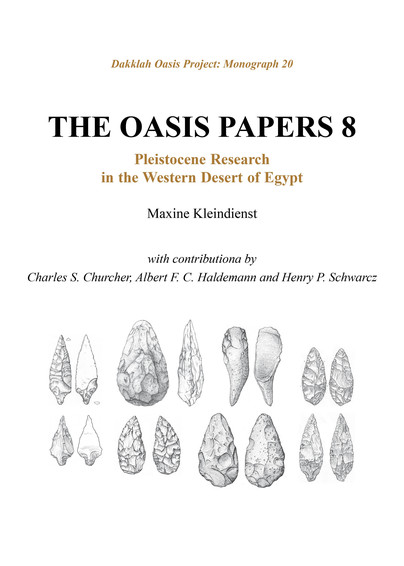
Format: Paperback
Pages: 208
ISBN: 9781789255713
Pub Date: 15 Sep 2020
Series: Dakhleh Oasis Papers
Illustrations: B/w
Description:
This is the only volume to present significant results of research into the Pleistocene of the Western Desert of Egypt. Research on Pleistocene prehistoric remains in Dakhleh Oasis began during survey in the 1978 Dakhleh Oasis Project (DOP) season, with discovery of the ubiquity of stone artefacts. Dedicated work by both prehistorians and environmentalists continued until 2011.
Comparative DOP reconnaissance and geological work in Kharga Oasis began in 1987, which morphed into the Kharga Oasis Prehistory Project (KOPP) in 2001. Papers on the Pleistocene research are focused on geoarchaeological and palaeo-environmental data, reporting on different aspects of the off-site fieldwork conducted in the oases. Pleistocene finds and sequence are included. Detailed analyses of palaeolakes, the meteoritic Dakhleh Event, chronometric dating, and the 'empty desert hypothesis' employ state of the art research strategies and techniques to provide important information on Pleistocene human uses and habitability in the Western Desert. A summary paper and a Catalogue of Pleistocene localities recorded in the Dakhleh Oasis survey are provided. The volume will be a major contribution to the publication of the results of several decades of work in a region where fieldwork is now increasingly difficult. This will be the only volume in which the significant results of the research into the Pleistocene of the Western Desert of Egypt appear. This has been undertaken under the auspices of the Dakhleh Oasis Project and its off-shoot The Kharga Oasis Prehistory Project. The preliminary results have been presented at various conferences and in articles that have all been well received. They incorporate state of the art research strategies and dating techniques. The volume will be a major contribution to the publication of the results of several decades of work in a region where fieldwork is now increasingly difficult.
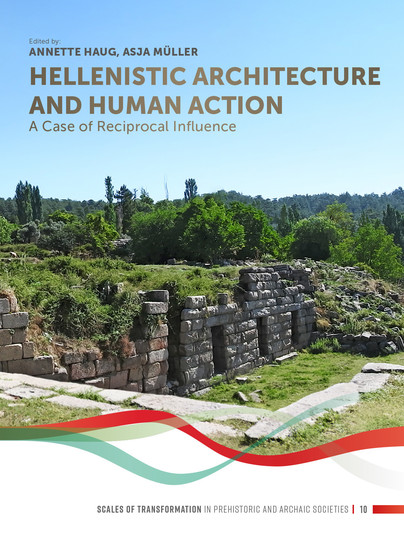
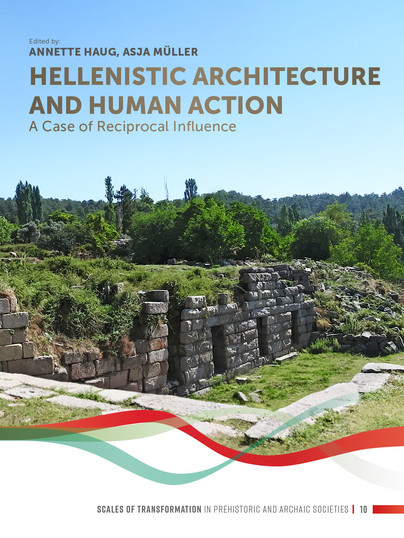
Pages: 212
ISBN: 9789088909108
Pub Date: 10 Sep 2020
Series: Scales of Transformation
Illustrations: 29fc/38bw
Pages: 212
ISBN: 9789088909092
Pub Date: 15 Nov 2020
Series: Scales of Transformation
Illustrations: 29fc/38bw
Description:
This book examines the mutual influence of architecture and human action during a key period of history: the Hellenistic age. During this era, the profound transformations in the Mediterranean’s archaeological and historical record are detectable, pointing to a conscious intertwining of the physical (landscape, architecture, bodies) and social (practice) components of built space. Compiling the outcomes of a conference held in Kiel in 2018, the volume assembles contributions focusing on Hellenistic architecture as an action context, perceived in movement through built space.
Sanctuaries, as a particularly coherent kind of built space featuring well-defined sets of architecture combined with ritual action, were chosen as the general frame for the analyses. The reciprocity between this sacred architecture and (religious) human action is traced through several layers starting from three specific case studies (Messene, Samothrace, Pella), extending to architectural modules, and finally encompassing overarching principles of design and use. As two additional case studies on caves and agorai show, the far-reaching entanglement of architecture and human action was neither restricted to highly architecturalised nor sacred spaces, but is characteristic of Hellenistic built space in general.
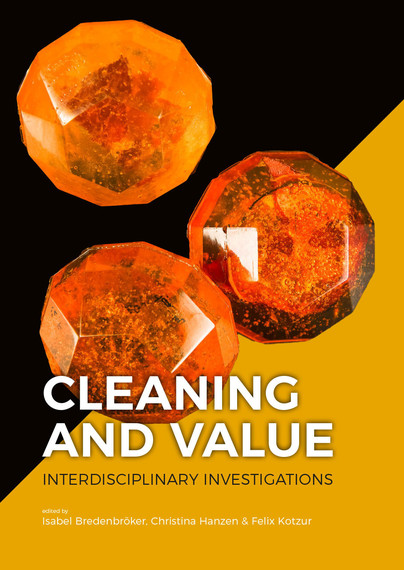
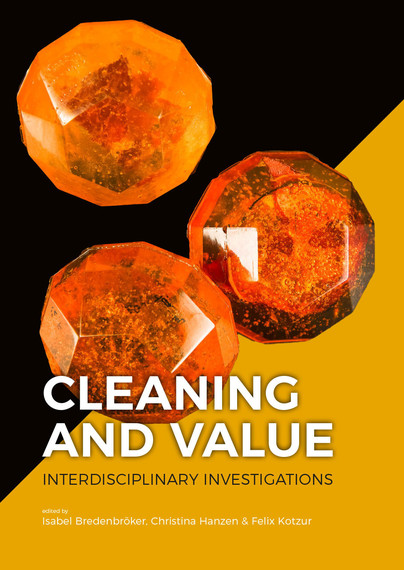
Pages: 210
ISBN: 9789088909221
Pub Date: 04 Sep 2020
Illustrations: 54fc/16bw
Pages: 210
ISBN: 9789088909214
Pub Date: 31 Oct 2020
Illustrations: 54fc/16bw
Description:
This volume combines scholarly contributions on the relation between values and cleaning processes in different places, cultures and times. The core disciplines are archaeology and anthropology with interdisciplinary additions from sinology, classic philology, philosophy, sociology and fine arts.
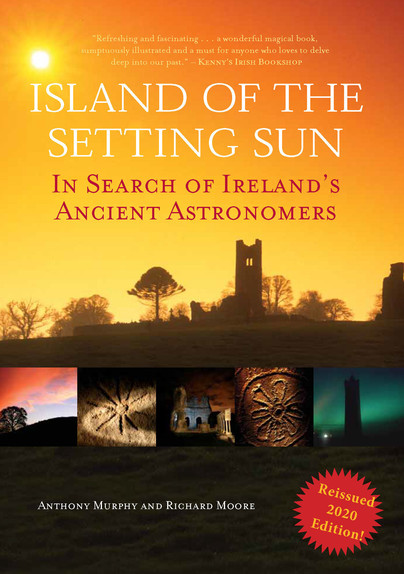
Format: Paperback
Pages: 352
ISBN: 9781916099852
Pub Date: 01 Sep 2020
Illustrations: 170+
Description:
Ireland is home to some of the world’s oldest astronomically-aligned structures, giant stone monuments erected over 5,000 years ago. Despite their apparent simplicity, these megalithic edifices were crafted by a scientifically knowledgeable community of farmers who endeavoured to enshrine their beliefs in a stellar afterlife within the very fabric of their cleverly-designed stone temples. Finally back in print, this reissued edition presents evidence suggesting the builders of monuments such as Newgrange and its Boyne Valley counterparts were adept astronomers, cunning engineers and capable surveyors.
Their huge monuments are memorials in stone and earth, commemorating their creators’ perceived unity with the cosmos and enshrining a belief system which resulted from a crossover between science and spirituality. As investigation of this awe-inspiring civilisation of people continues on many levels, evidence is emerging that significant archaeological sites dating from deep in prehistory are linked – not just through mythology, archaeology and cosmology – but through an arrangement of complex, and in some cases astonishing, alignments. Some of these alignments of ancient sites stretch from one side of Ireland to another.While the accounts of the lives of some prominent Irish saints appear to be steeped in folklore and mystery, it seems from new interpretations of the literature that the cosmic world view which existed in Neolithic Ireland experienced a continuity right into the Early Christian period. Join us on this fascinating exploration of stones, stars and stories. "The sheer amount of information contained within the book is mind-boggling. It is well thought out and structured… The more you read the evidence the more convinced you become." – Astronomy& Space magazine "Refreshing and fascinating . . . a wonderful magical book, sumptuously illustrated and a must for anyone who loves to delve deep into our past." – Kenny’s Irish Bookshop "A fascinating insight into Ireland’s ancient burial sites" – Irish Independent "A monument" – Drogheda Independent “It is a beautiful book and very well written. The information that you collected is outstanding.” – Barbara Carter, co-author, The Myth of the Year and The Goddess and the Bull “The authors… reach interesting and challenging conclusions about the significance of ancient astronomical knowledge. The book is jammed with colour illustrations, maps and photographs. A thoroughly interesting read!” – Archaeology Ireland "An essential book that demonstrates just how much the beliefs and practices of our ancestors were influenced by the movement of the stars, in particular those of the constellation Cygnus - the celestial swan and Northern Cross - once seen as a source of life and the destination of the soul in death. A must have tome for all those passionate about what remains of our fast disappearing ritual monuments of the prehistoric age." - Andrew Collins, author of The Cygnus Mystery
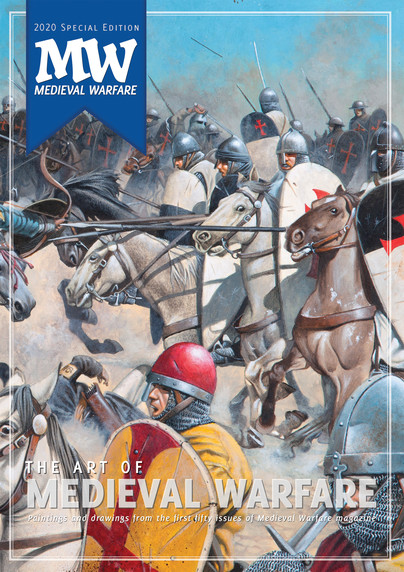
Format: Paperback
Pages: 100
ISBN: 9789490258214
Pub Date: 01 Sep 2020
Series: Medieval Warfare Special
Description:
The 2020 special edition of Medieval Warfare is a compilation of covers, battle scenes and unit reconstructions from the first fifty issues of the magazine. Compiled and edited by Peter Konieczny, with contributions from the rest of the Medieval Warfare staff, this 100-page full-colour book features artwork by favourite illustrators such as Jose Cabrera-Pena, Darren Tan, Rocio Espin, and Zvonimir Grbasic to name but a few. Also included are articles by the staff with insight into our philosophy for commissioning artwork, and a "behind-the-scenes" look at how illustrations are produced.
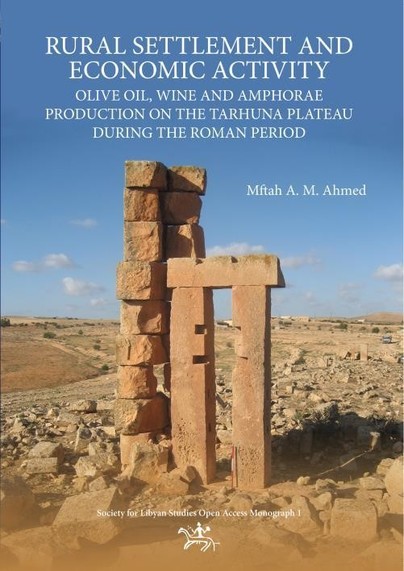
Format: Paperback
Pages: 216
ISBN: 9781900971294
Pub Date: 31 Aug 2020
Imprint: Society for Libyan Studies
Description:
Rural Settlement and Economic Activity is a key new addition to literature on the rural economy of Tripolitania during Antiquity. The chapters explore the geography and climate of the area and present the results of the author’s archaeological survey. Settlement types and their constructions are examined, followed by a detailed analysis of olive oil presses and their production capacity.
Finally, amphora production sites are discussed, with examples of the types of amphora and their capacities. The conclusions give an overview of the rural economy of Tarhuna during the Roman period, focusing on economic aspects and offering an astonishing new picture of this highly productive landscape




















